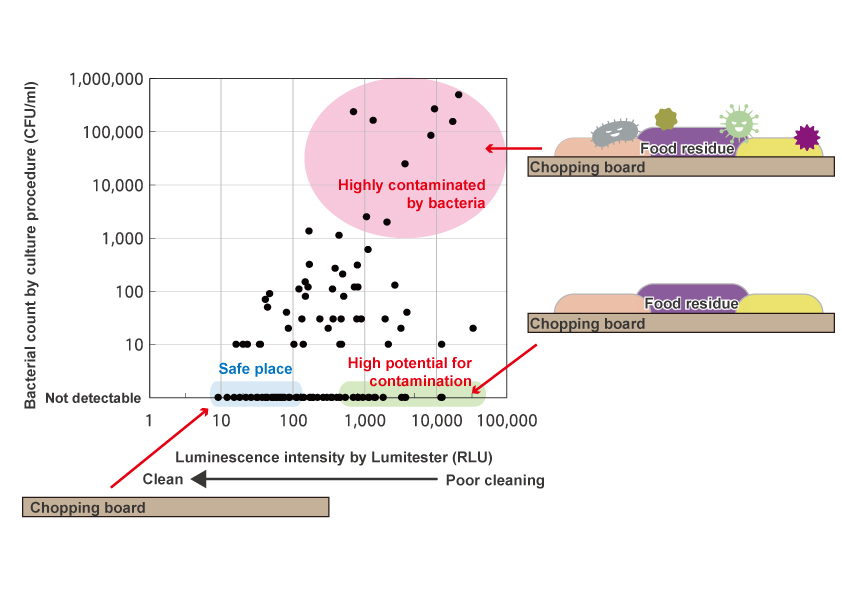We have received several inquiries concerning the ATP Test (Kikkoman A3), such as “Can we measure the numbers of bacteria and viruses?” and “Do the measurement values mean bacterial counts?” Thus, we would like to explain that bacterial counts are not always correlated with the amount of ATP and describe the relationship between the amount of ATP and microorganisms.
The amount of ATP ≠ bacterial counts
Numerical values obtained through the ATP Test (Kikkoman A3) indicate the total amount of ATP + ADP + AMP. ATP molecules in almost all of the places inspected are not derived from bacteria alone, but also from organic soil such as food residues and human perspiration. Thus, the total amount of ATP + ADP + AMP derived from the sample is displayed as the measurement value.
The relationship between the amount of ATP and bacterial counts
As we explain in the section “The difference between bacteriological testing and the ATP Test (Kikkoman A3),” any remaining organic soil including food residues may lead to bacterial proliferation in a short time period. However, bacteriological testing alone may cause the oversight of such dangerous conditions.
Let’s view measured values obtained using our Lumitester and LuciPac as a plot of bacterial counts (CFU/ml, on the vertical axis) vs. the amount of luminescence (RLU, on the horizontal axis).

Focus on the part highlighted in green. The measurement with Lumitester & LuciPac indicated high amounts of luminescence, but no bacteria were detected. This means that there were very low bacteria count, yet organic soil such as food residues remained. The organic soil left on the surface may induce bacterial proliferation in a short period presenting a risk of contamination and foodborne illness. From the viewpoint of environmental hygiene, it also means that body fluids such as saliva, nasal discharge, blood, and other organic soil may remain due to insufficient cleaning, and measures against infectious diseases are not sufficient.
As shown above, the ATP Test (Kikkoman A3) can provide an early warning for contamination that bacteriological testing alone cannot.

